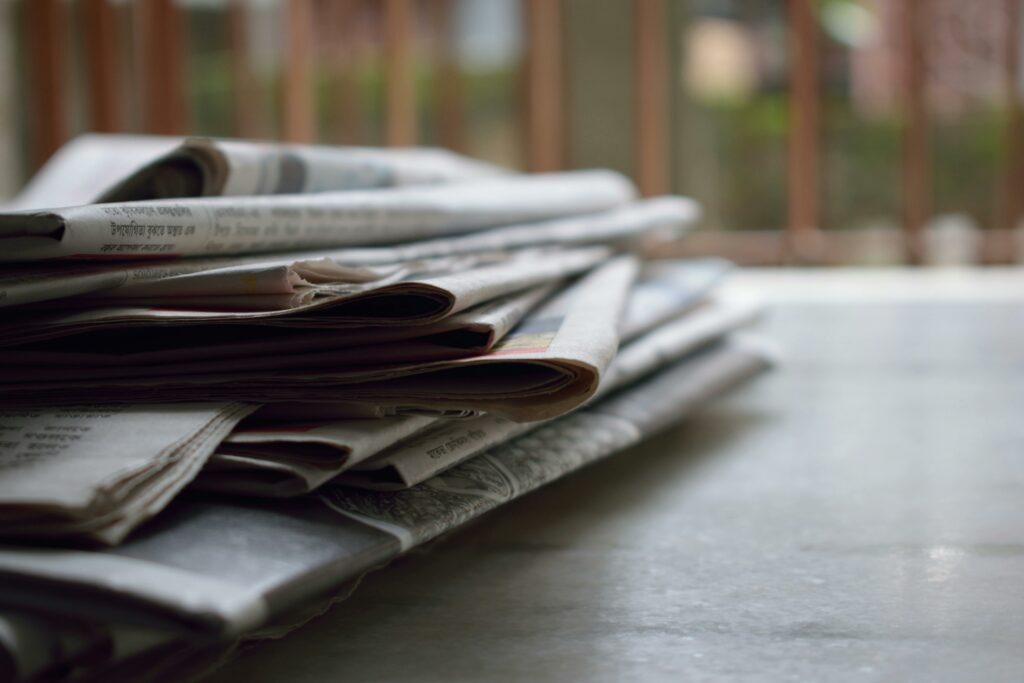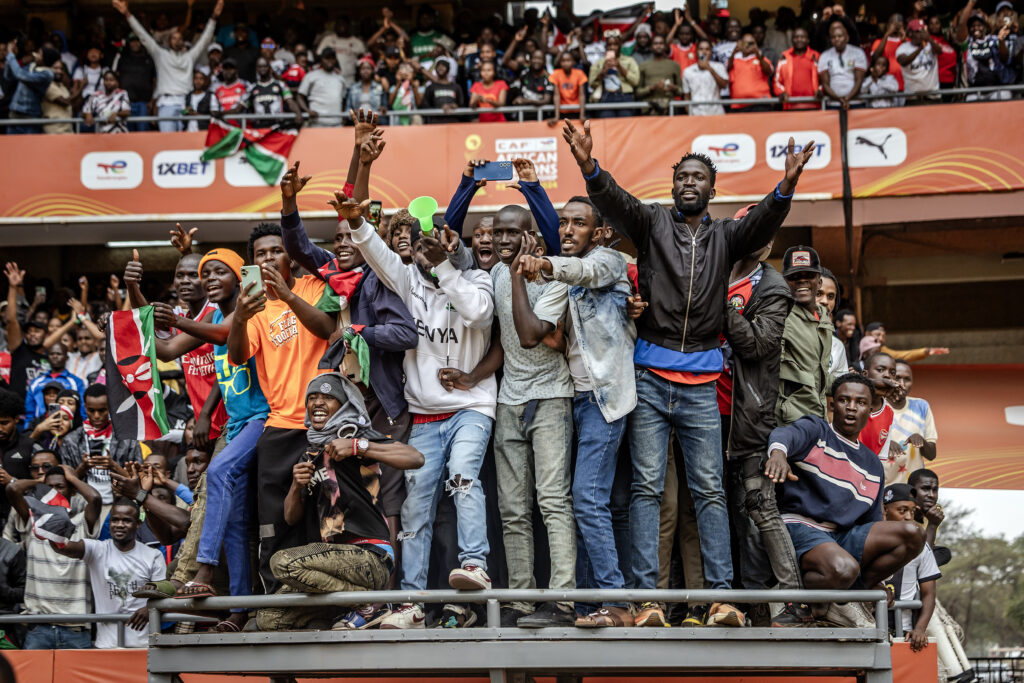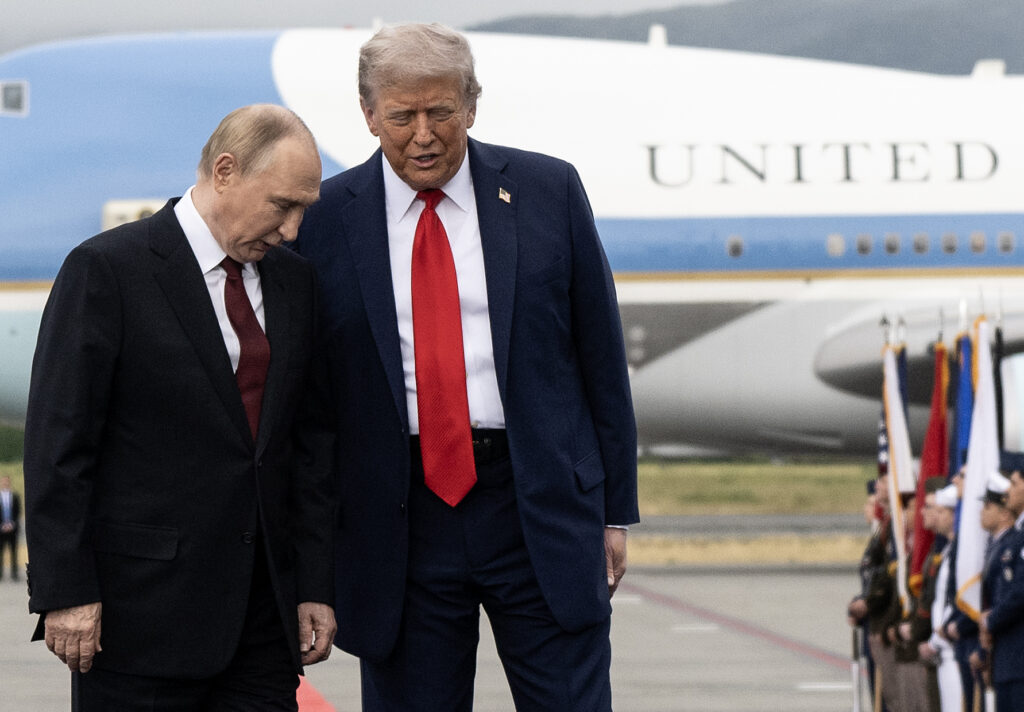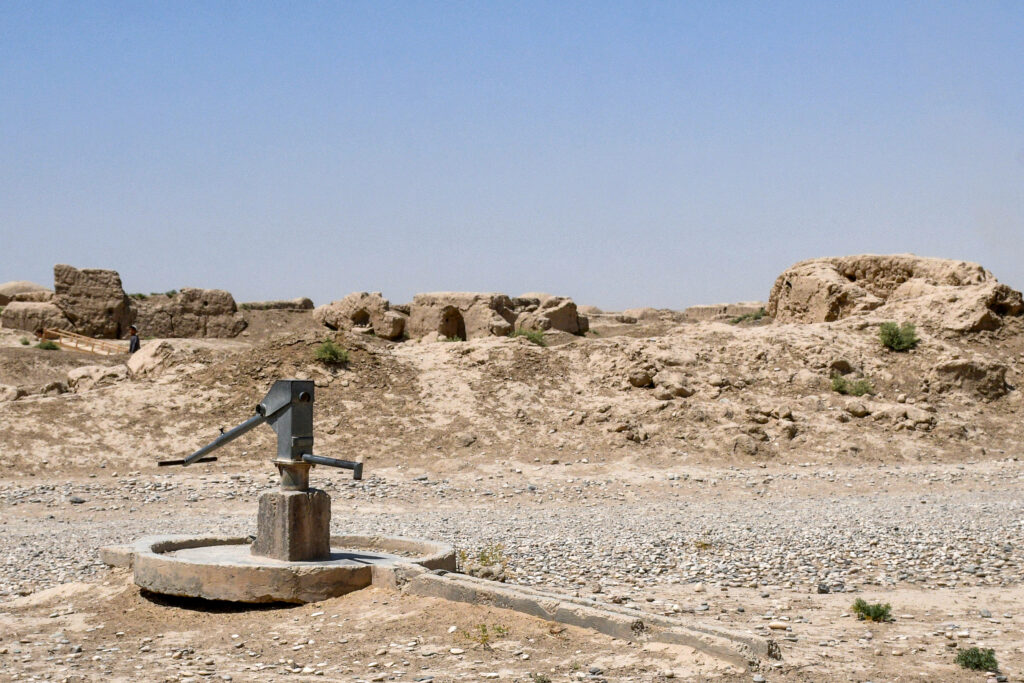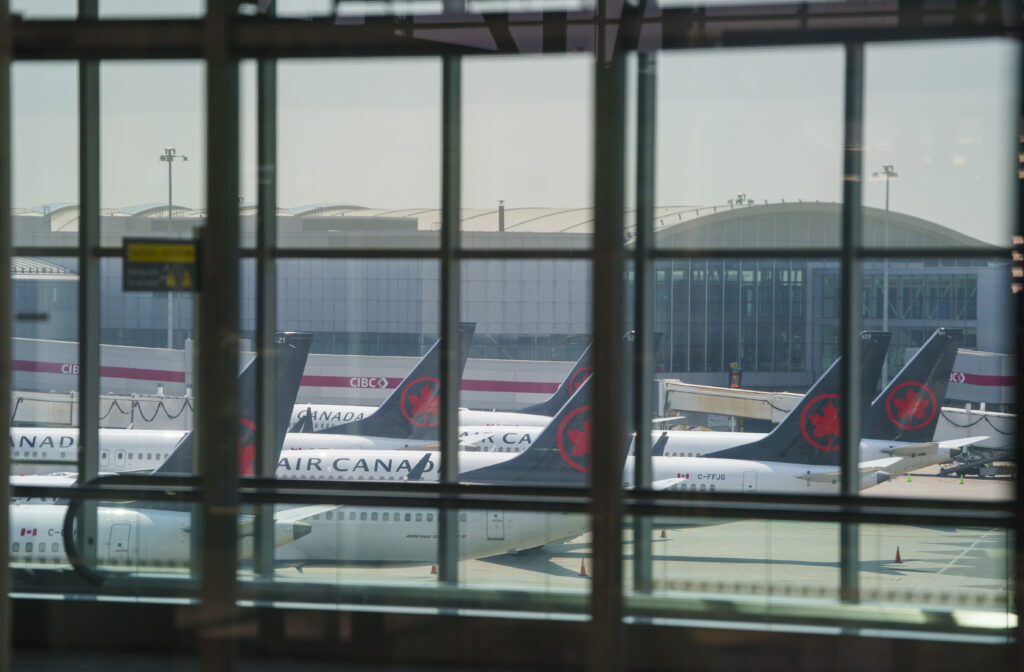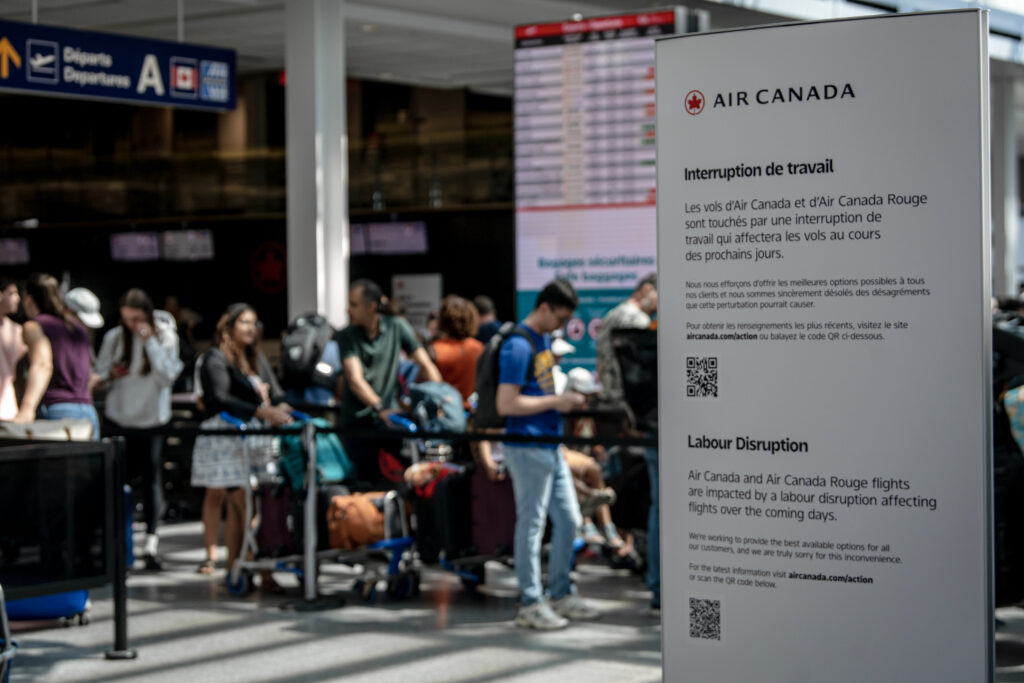After deadly protests, Kenya’s Ruto seeks football distractionSun, 17 Aug 2025 05:27:48 GMT
Whether in a sports jersey or a suit, Kenyan President William Ruto is casting himself as a model supporter of the national football team as an international tournament provides respite from recent bloody protests against his regime.In June and July, the east African country, usually known as a beacon of calm in the turbulent Horn …
Europe to mull over plan for peace in Ukraine after Trump-Putin summit
Leaders of France, Germany and Britain will host a video call on Sunday for their so-called “coalition of the willing” to discuss steps towards ending the war in Ukraine, after Donald Trump dropped his push for a ceasefire after his Alaska summit with Russian leader Vladimir Putin.Securing a ceasefire in Ukraine, more than three years after Russia’s invasion, had been one of the US president’s core demands before the summit, to which Ukraine and its European allies were not invited.But after a meeting that yielded no clear breakthrough, Trump ruled out an immediate ceasefire in Ukraine — a move that would appear to favor Putin who has long argued for negotiations on a final peace deal. Ukraine and its European allies have criticized it as a way to buy time and press Russia’s battlefield advances.Trump spoke with Zelensky and European leaders on his flight back from Alaska to Washington, saying afterward that “it was determined by all that the best way to end the horrific war between Russia and Ukraine is to go directly to a peace agreement which would end the war.”Ceasefire agreements “often times do not hold up,” Trump added on his Truth Social platform.But Zelensky, who is due to visit Washington on Monday, appeared unconvinced by the change of tack, saying on Saturday that it “complicates the situation”.If Moscow lacks “the will to carry out a simple order to stop the strikes, it may take a lot of effort to get Russia to have the will to implement far greater — peaceful coexistence with its neighbors for decades,” he said on social media.- ‘Harsh reality’ – Trump expressed support during his call with Zelensky and European leaders for a proposal by Putin to take full control of two largely Russian-held Ukrainian regions in exchange for freezing the frontline in two others, an official briefed on the talks told AFP.Putin “de facto demands that Ukraine leave Donbas,” an area consisting of the Donetsk and Lugansk regions in eastern Ukraine, the source said.In exchange, Russian forces would halt their offensive in the Black Sea port region of Kherson and Zaporizhzhia in southern Ukraine, where the main cities are still under Ukrainian control.Several months into its full-scale invasion of Ukraine, Russia in September 2022 claimed to have annexed all four Ukrainian regions even though its troops still do not fully control any of them.”The Ukrainian president refused to leave Donbas,” the source said.Trump notably also said the United States was prepared to provide Ukraine security guarantees, an assurance German Chancellor Friedrich Merz hailed as “significant progress.”But there was a scathing assessment of the summit outcome from the European Union’s top diplomat Kaja Kallas, who accused Putin of seeking to “drag out negotiations” with no commitment to end the bloodshed.”The harsh reality is that Russia has no intention of ending this war any time soon,” Kallas said.- Zelensky back in White House -The main diplomatic focus now switches to Zelensky’s talks at the White House on Monday.An EU source told AFP that a number of European leaders had also been invited to attend.The Ukrainian president’s last Oval Office visit in February ended in an extraordinary shouting match, with Trump and Vice President JD Vance publicly berating Zelensky for not showing enough gratitude for US aid.Zelensky said Saturday after a “substantive” conversation with Trump about the Alaska summit that he looked forward to his Washington visit and discussing “all of the details regarding ending the killing and the war.” In an interview with broadcaster Fox News after his sit-down with Putin, Trump had suggested that the onus was now on Zelensky to secure a peace deal as they work towards an eventual trilateral summit with Putin.”It’s really up to President Zelensky to get it done,” Trump said.- European pressure -In an earlier statement, European leaders welcomed the plan for a Trump-Putin-Zelensky summit but added that they would maintain pressure on Russia in the absence of a ceasefire.Meanwhile, the conflict in Ukraine raged on, with Kyiv announcing Saturday that Russia had launched 85 attack drones and a ballistic missile during the night.Back in Moscow, Putin said his summit talks with Trump had been “timely” and “very useful.”In his post-summit statement in Alaska, Putin had warned Ukraine and European countries not to engage in any “behind-the-scenes intrigues” that could disrupt what he called “this emerging progress.”
From drought to floods, water extremes drive displacement in Afghanistan
Next to small bundles of belongings, Maruf waited for a car to take him and his family away from their village in northern Afghanistan, where drought-ridden land had yielded nothing for years.”When you have children and are responsible for their needs, then tell me, what are you still doing in this ruin?” said the 50-year-old.Many of the mud homes around him are already empty, he said, his neighbours having abandoned the village, fleeing “thirst, hunger and a life with no future”.Successive wars displaced Afghans over 40 years, but peace has not brought total reprieve, as climate change-fuelled shocks drive people from their homes and strain livelihoods.Since the war ended between the now-ruling Taliban and US-led forces in 2021, floods, droughts and other climate change-driven environmental hazards have become the main cause of displacement in the country, according to the UN’s International Organization for Migration (IOM).In early 2025, nearly five million people across the country were impacted and nearly 400,000 people were displaced, the IOM said in July, citing its Climate Vulnerability Assessment.The majority of Afghans live in mud homes and depend heavily on agriculture and livestock, making them particularly exposed to environmental changes.The water cycle has been sharply impacted, with Afghanistan again in the grip of drought for the fourth time in five years and flash floods devastating land, homes and livelihoods.”Crop failure, dry pastures and vanishing water sources are pushing rural communities to the edge,” the UN Food and Agriculture Organization said in July.”It’s getting harder for families to grow food, earn income or stay where they are.”Experts and Taliban officials have repeatedly warned of escalating climate risks as temperatures rise, extreme weather events intensify and precipitation patterns shift.The country’s limited infrastructure, endemic poverty and international isolation leave Afghans with few resources to adapt and recover — while already facing one of the world’s worst humanitarian crises worsened by severe aid cuts.- Too little -Abdul Jalil Rasooli’s village in the drought-hit north has watched their way of life wither with their crops.Drought already drove many from his village to Pakistan and Iran a decade ago.Now they’ve returned, forced back over the border along with more than four million others from the two neighbouring countries since late 2023 — but to work odd jobs, not the land.”Everything comes down to water,” said the 64-year-old, retreating from the day’s heat in the only home in the village still shaded by leafy trees.”Water scarcity ruins everything, it destroys farming, the trees are drying up, and there’s no planting anymore,” he told AFP.Rasooli holds out hope that the nearby Qosh Tepa canal will bring irrigation from the Amu Darya river. Diggers are carving out the last section of the waterway, but its completion is more than a year away, officials told AFP.It’s one of the water infrastructure projects the Taliban authorities have undertaken since ousting the foreign-backed government four years ago.But the theocratic government, largely isolated on the global stage over its restrictions on women, has limited resources to address a crisis long exacerbated by poor environmental, infrastructure and resource management during 40 years of conflict. “The measures we have taken so far are not enough,” Energy and Water Minister Abdul Latif Mansoor told journalists in July, rattling off a list of dam and canal projects in the pipeline.”There are a lot of droughts… this is Allah’s will, first we must turn to Allah.”Hamayoun Amiri left for Iran when he was a young man and drought struck his father’s small plot of land in western Herat province.Forced to return in a June deportation campaign, he found himself back where he started 14 years ago — with nothing to farm and his father’s well water “getting lower and lower every day”.The Harirud river was a dry bed in July as it neared the border with downstream Iran, following a road lined with empty mud buildings pummelled back to dust by the province’s summer gales. – Too much -Taliban authorities often hold prayers for rain, but while the lack of water has parched the land in some parts of the country, changes in precipitation patterns mean rains can be more of a threat than a blessing.This year, rains have come earlier and heavier amid above-average temperatures, increasing flood risks, the UN said.A warmer atmosphere holds more water, so rain often comes in massive, destructive quantities.”The weather has changed,” said Mohammad Qasim, a community leader of several villages in central Maidan Wardak battered by flash floods in June.”I’m around 54 years old, and we have never experienced problems like this before,” he told AFP in the riverbed full of boulders and cracked mud. Eighteen-year-old Wahidullah’s family was displaced after their home was damaged beyond repair and all their livestock were drowned. The family of 11 slept in or near a rudimentary tent on high ground, with no plans or means to rebuild.”We’re worried that if another flood comes, then there will be nothing left and nowhere to go.”
Air Canada flights grounded as government intervenes in strike
All Air Canada planes remained grounded late Saturday despite the Canadian government intervening to end a strike by cabin crew members that saw hundreds of flights cancelled and triggered summer travel chaos.Canada’s largest airline, which has 130,000 daily passengers and flies directly to 180 cities worldwide, said that all flights would be cancelled until Sunday afternoon pending a decision by the country’s industrial relations board.Air Canada had stopped all operations after some 10,000 flight attendants began industrial action fueled by a wage dispute just after midnight on Saturday.Hours later, Canada’s labor policy minister, Patty Hajdu, moved to invoke a legal provision that would halt the strike and force both sides into binding arbitration. “This is not a decision that I have taken lightly. The potential for immediate negative impact on Canadians and our economy is simply too great,” Hajdu told journalists.However, she said it could still take five to 10 days for Air Canada to resume regular services after the disruption.Air Canada said in a statement later Saturday that all flights remained grounded pending a decision by the Canada Industrial Relations Board on the government’s arbitration order.The airline also said customers on cancelled flights were being offered a full refund.It had earlier urged customers not to go to the airport if they have a ticket for Air Canada or its lower-cost subsidiary Air Canada Rouge.It said flights by Air Canada Express, which are operated by a third party, would not be impacted by the walkout.- ‘Terrible precedent’ – The Canadian Union of Public Employees (CUPE), which is representing the workers, said its members would remain on strike until the government formally issues an order that they return to work.”Please remember there is only a referral, we are still in a legal position to strike and will continue to do so, we must show the company we are in control of this,” the union’s Air Canada branch wrote on Facebook. In a separate statement, CUPE slammed the Canadian government’s intervention as “rewarding Air Canada’s refusal to negotiate fairly by giving them exactly what they wanted.””This sets a terrible precedent,” it added. The union later pointed out that Maryse Tremblay, the chair of the Canada Industrial Relations Board, previously worked as legal counsel for Air Canada.Tremblay ruling on whether to end the strike was “an almost unthinkable display of conflict-of-interest,” the union said on Facebook.- Unpaid ground work -In addition to wage increases, the union says it wants to address uncompensated ground work, including during the boarding process. Rafael Gomez, who heads the University of Toronto’s Center for Industrial Relations, told AFP it is “common practice, even around the world” to compensate flight attendants based on time spent in the air. An average passenger, not familiar with common industry practice, could think, “‘I’m waiting to board the plane and there’s a flight attendant helping me, but they’re technically not being paid for that work,'” he said before the strike began. Air Canada detailed its latest offer in a Thursday statement, specifying that under the terms, a senior flight attendant would on average make CAN$87,000 ($65,000) by 2027.CUPE has described Air Canada’s offers as “below inflation (and) below market value.”The union has also rejected requests from the federal government and Air Canada to resolve outstanding issues through independent arbitration. Canada’s economy, though showing resilience, has begun feeling the effects of US President Donald Trump’s trade war, with his tariffs hitting crucial sectors like auto, aluminum and steel. In a statement issued before the strike began, the Business Council of Canada warned an Air Canada work stoppage could add further pain. “At a time when Canada is dealing with unprecedented pressures on our critical economic supply chains, the disruption of national air passenger travel and cargo transport services would cause immediate and extensive harm to all Canadians,” it said.
Les avions d’Air Canada cloués au sol par une grève, le gouvernement intervient
Le gouvernement canadien a décidé samedi d’intervenir pour tenter de mettre fin à une grève d’hôtesses et de stewards paralysant les activités d’Air Canada, la principale compagnie aérienne du pays avec des centaines de vols annulés.La ministre de l’Emploi, Patty Hajdu, a sommé les parties de “reprendre et poursuivre leurs activités et leurs fonctions”.La grève, initiée par le personnel navigant pour obtenir une meilleure rémunération, ne ferait qu’alourdir le “fardeau financier” des Canadiens, a-t-elle prévenu.Le gouvernement fédéral a sollicité un arbitre indépendant, le Conseil canadien des relations industrielles (CCRI), pour régler les différends entre la compagnie aérienne et le Syndicat canadien de la fonction publique (SCFP).Le CCRI a le pouvoir d’ordonner la reprise des activités, mais devra commencer par examiner les déclarations des parties et décider s’il souhaite intervenir, ce qui peut prendre “entre 24 et 48 heures”, selon la ministre.En attendant, la grève, qui impacte 130.000 passagers par jour selon Air Canada, se poursuit donc.”Les vols sont annulés au moins jusqu’à l’après-midi du dimanche 17 août. Le processus du CCRI est en cours, de sorte que d’autres annulations pourraient suivre”, a indiqué la compagnie dans un communiqué dans la soirée.”Nous sommes profondément attristés pour nos passagers. Personne ne veut voir des Canadiens bloqués ou inquiets pour leurs projets de voyage, mais nous ne pouvons pas travailler gratuitement”, a insisté Natasha Stea, une représentante des hôtesses de l’air.- Travail au sol non rémunéré -Le syndicat SCFP, qui représente quelque 10.000 personnels navigants, est entré en grève dans la nuit de vendredi à samedi pour réclamer de meilleures rémunérations.Au-delà d’une augmentation de salaire, le personnel navigant réclame d’être rémunéré pour les heures de travail au sol, y compris lors de l’embarquement, ce qui n’est pas le cas aujourd’hui.En réponse à la grève, Air Canada et sa filiale à bas coût Air Canada Rouge ont a déclenché “un lock-out”.Natasha Guwen fait partie des nombreux passagers dont le vol a été annulé. “Ils essaient de nous mettre sur un autre vol, mais rien n’est sûr”, rapporte à l’AFP cette touriste indienne depuis l’aéroport de Toronto.Avant même le début officiel de la grève, la compagnie aérienne avait progressivement réduit ses opérations. Vendredi soir, elle avait annoncé avoir déjà annulé 623 vols au cours des derniers jours, touchant plus de 100.000 passagers.- Effets sur l’économie -L’entreprise avait par ailleurs détaillé jeudi une offre de compromis prévoyant de porter le salaire annuel moyen d’un agent de bord senior à 87.000 dollars canadiens (54.000 euros) d’ici 2027, mais le SCFP avait jugé les propositions insuffisantes au regard notamment de l’inflation.Le syndicat avait également rejeté les demandes de la compagnie et du gouvernement canadien de recourir à un arbitrage indépendant.Ce n’est pas la première fois que le gouvernement canadien intervient dans un conflit social. En novembre 2024, il avait ainsi ordonné la reprise immédiate des opérations dans plusieurs ports canadiens, puis en août de la même année le retour au travail des cheminots.Air Canada estime qu’il faudra entre cinq et dix jours pour que ses activités reprennent leur rythme habituel.L’économie canadienne, bien que montrant des signes de résilience, commence à éprouver les effets de la guerre commerciale engagée par le président américain Donald Trump, avec des droits de douane affectant des secteurs cruciaux pour le pays comme l’automobile, l’aluminium et l’acier.Dans ce contexte, le Conseil des affaires canadien, qui regroupe des dirigeants de plus d’une centaine de grandes entreprises, a jugé que la grève était susceptible de causer “un préjudice immédiat et considérable à tous les Canadiens”.
Les avions d’Air Canada cloués au sol par une grève, le gouvernement intervient
Le gouvernement canadien a décidé samedi d’intervenir pour tenter de mettre fin à une grève d’hôtesses et de stewards paralysant les activités d’Air Canada, la principale compagnie aérienne du pays avec des centaines de vols annulés.La ministre de l’Emploi, Patty Hajdu, a sommé les parties de “reprendre et poursuivre leurs activités et leurs fonctions”.La grève, initiée par le personnel navigant pour obtenir une meilleure rémunération, ne ferait qu’alourdir le “fardeau financier” des Canadiens, a-t-elle prévenu.Le gouvernement fédéral a sollicité un arbitre indépendant, le Conseil canadien des relations industrielles (CCRI), pour régler les différends entre la compagnie aérienne et le Syndicat canadien de la fonction publique (SCFP).Le CCRI a le pouvoir d’ordonner la reprise des activités, mais devra commencer par examiner les déclarations des parties et décider s’il souhaite intervenir, ce qui peut prendre “entre 24 et 48 heures”, selon la ministre.En attendant, la grève, qui impacte 130.000 passagers par jour selon Air Canada, se poursuit donc.”Les vols sont annulés au moins jusqu’à l’après-midi du dimanche 17 août. Le processus du CCRI est en cours, de sorte que d’autres annulations pourraient suivre”, a indiqué la compagnie dans un communiqué dans la soirée.”Nous sommes profondément attristés pour nos passagers. Personne ne veut voir des Canadiens bloqués ou inquiets pour leurs projets de voyage, mais nous ne pouvons pas travailler gratuitement”, a insisté Natasha Stea, une représentante des hôtesses de l’air.- Travail au sol non rémunéré -Le syndicat SCFP, qui représente quelque 10.000 personnels navigants, est entré en grève dans la nuit de vendredi à samedi pour réclamer de meilleures rémunérations.Au-delà d’une augmentation de salaire, le personnel navigant réclame d’être rémunéré pour les heures de travail au sol, y compris lors de l’embarquement, ce qui n’est pas le cas aujourd’hui.En réponse à la grève, Air Canada et sa filiale à bas coût Air Canada Rouge ont a déclenché “un lock-out”.Natasha Guwen fait partie des nombreux passagers dont le vol a été annulé. “Ils essaient de nous mettre sur un autre vol, mais rien n’est sûr”, rapporte à l’AFP cette touriste indienne depuis l’aéroport de Toronto.Avant même le début officiel de la grève, la compagnie aérienne avait progressivement réduit ses opérations. Vendredi soir, elle avait annoncé avoir déjà annulé 623 vols au cours des derniers jours, touchant plus de 100.000 passagers.- Effets sur l’économie -L’entreprise avait par ailleurs détaillé jeudi une offre de compromis prévoyant de porter le salaire annuel moyen d’un agent de bord senior à 87.000 dollars canadiens (54.000 euros) d’ici 2027, mais le SCFP avait jugé les propositions insuffisantes au regard notamment de l’inflation.Le syndicat avait également rejeté les demandes de la compagnie et du gouvernement canadien de recourir à un arbitrage indépendant.Ce n’est pas la première fois que le gouvernement canadien intervient dans un conflit social. En novembre 2024, il avait ainsi ordonné la reprise immédiate des opérations dans plusieurs ports canadiens, puis en août de la même année le retour au travail des cheminots.Air Canada estime qu’il faudra entre cinq et dix jours pour que ses activités reprennent leur rythme habituel.L’économie canadienne, bien que montrant des signes de résilience, commence à éprouver les effets de la guerre commerciale engagée par le président américain Donald Trump, avec des droits de douane affectant des secteurs cruciaux pour le pays comme l’automobile, l’aluminium et l’acier.Dans ce contexte, le Conseil des affaires canadien, qui regroupe des dirigeants de plus d’une centaine de grandes entreprises, a jugé que la grève était susceptible de causer “un préjudice immédiat et considérable à tous les Canadiens”.
Les avions d’Air Canada cloués au sol par une grève, le gouvernement intervient
Le gouvernement canadien a décidé samedi d’intervenir pour tenter de mettre fin à une grève d’hôtesses et de stewards paralysant les activités d’Air Canada, la principale compagnie aérienne du pays avec des centaines de vols annulés.La ministre de l’Emploi, Patty Hajdu, a sommé les parties de “reprendre et poursuivre leurs activités et leurs fonctions”.La grève, initiée par le personnel navigant pour obtenir une meilleure rémunération, ne ferait qu’alourdir le “fardeau financier” des Canadiens, a-t-elle prévenu.Le gouvernement fédéral a sollicité un arbitre indépendant, le Conseil canadien des relations industrielles (CCRI), pour régler les différends entre la compagnie aérienne et le Syndicat canadien de la fonction publique (SCFP).Le CCRI a le pouvoir d’ordonner la reprise des activités, mais devra commencer par examiner les déclarations des parties et décider s’il souhaite intervenir, ce qui peut prendre “entre 24 et 48 heures”, selon la ministre.En attendant, la grève, qui impacte 130.000 passagers par jour selon Air Canada, se poursuit donc.”Les vols sont annulés au moins jusqu’à l’après-midi du dimanche 17 août. Le processus du CCRI est en cours, de sorte que d’autres annulations pourraient suivre”, a indiqué la compagnie dans un communiqué dans la soirée.”Nous sommes profondément attristés pour nos passagers. Personne ne veut voir des Canadiens bloqués ou inquiets pour leurs projets de voyage, mais nous ne pouvons pas travailler gratuitement”, a insisté Natasha Stea, une représentante des hôtesses de l’air.- Travail au sol non rémunéré -Le syndicat SCFP, qui représente quelque 10.000 personnels navigants, est entré en grève dans la nuit de vendredi à samedi pour réclamer de meilleures rémunérations.Au-delà d’une augmentation de salaire, le personnel navigant réclame d’être rémunéré pour les heures de travail au sol, y compris lors de l’embarquement, ce qui n’est pas le cas aujourd’hui.En réponse à la grève, Air Canada et sa filiale à bas coût Air Canada Rouge ont a déclenché “un lock-out”.Natasha Guwen fait partie des nombreux passagers dont le vol a été annulé. “Ils essaient de nous mettre sur un autre vol, mais rien n’est sûr”, rapporte à l’AFP cette touriste indienne depuis l’aéroport de Toronto.Avant même le début officiel de la grève, la compagnie aérienne avait progressivement réduit ses opérations. Vendredi soir, elle avait annoncé avoir déjà annulé 623 vols au cours des derniers jours, touchant plus de 100.000 passagers.- Effets sur l’économie -L’entreprise avait par ailleurs détaillé jeudi une offre de compromis prévoyant de porter le salaire annuel moyen d’un agent de bord senior à 87.000 dollars canadiens (54.000 euros) d’ici 2027, mais le SCFP avait jugé les propositions insuffisantes au regard notamment de l’inflation.Le syndicat avait également rejeté les demandes de la compagnie et du gouvernement canadien de recourir à un arbitrage indépendant.Ce n’est pas la première fois que le gouvernement canadien intervient dans un conflit social. En novembre 2024, il avait ainsi ordonné la reprise immédiate des opérations dans plusieurs ports canadiens, puis en août de la même année le retour au travail des cheminots.Air Canada estime qu’il faudra entre cinq et dix jours pour que ses activités reprennent leur rythme habituel.L’économie canadienne, bien que montrant des signes de résilience, commence à éprouver les effets de la guerre commerciale engagée par le président américain Donald Trump, avec des droits de douane affectant des secteurs cruciaux pour le pays comme l’automobile, l’aluminium et l’acier.Dans ce contexte, le Conseil des affaires canadien, qui regroupe des dirigeants de plus d’une centaine de grandes entreprises, a jugé que la grève était susceptible de causer “un préjudice immédiat et considérable à tous les Canadiens”.
